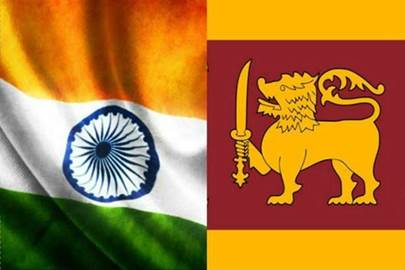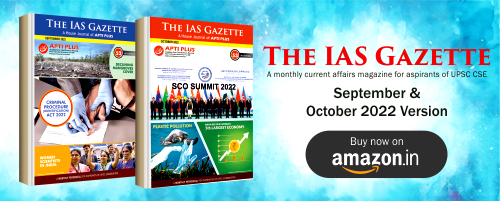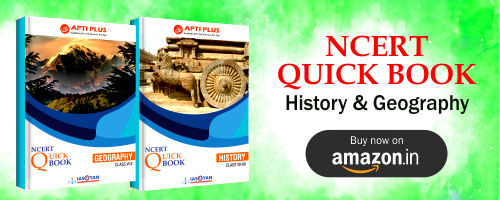Description

Copyright infringement not intended
Context: Sri Lanka exports five times more than imports under India-Sri Lanka Free Trade Agreement
Details:
- Sri Lanka has exported five times more than its imports under the India-Sri Lanka Free Trade Agreement in the first nine months of this year, 2022.
- A report issued by the Sri Lankan finance ministry stated that the island nation's exports added up to over 140 billion Lankan rupees under the agreement. Imports into Sri Lanka from India stood at 28 billion rupees.
- Trade with India contributed to almost 65 percent of the total trade of Sri Lanka under four existing free trade agreements. The India-Sri Lanka Free Trade Agreement was signed in 1998 and is in force since March 2000.
- The economic crisis hit the nation and it saw reduced imports in 2022 due to a fall in the forex reserves. Sri Lanka had also imposed restrictions on import of several items.
- During the crisis, India had extended humanitarian aid of about 4 billion US dollars to help secure food, health, and energy security.
- Earlier, in September this year, the Indian High Commission held discussions with Sri Lankan government on restructuring Sri Lanka's bilateral debt to India. The discussions were part of India's efforts to an early conclusion of a suitable IMF programme that requires assurances from creditors to make Sri Lanka's debt sustainable.
Background:
- The relationship between India and Sri Lanka is more than 2,500 years old
- Both countries have a legacy of intellectual, ethnic, cultural, religious and linguistic interaction
- In recent years, bilateral relations and cooperation in the fields of development, trade, investment, education, culture and defence have grown.
Significance of Sri Lanka for India:
- Sri Lanka is India’s closest maritime neighbour and is strategically located in Indian Ocean and Bay of Bengal.
- As per its ‘Neighbourhood-First Policy’ and the ‘SAGAR (Security and Growth for All in the Region) Doctrine’, India attaches great importance to Sri Lanka “to keep the Indian Ocean region peaceful and secure”.
- 70% of Indian cargo comes through the Colombo port, which is a largest trans-shipment port of South-Asia.
Political Relations:
- Historically, Sri Lanka was part of British India and since independence both countries had cordial relations.
- Unpleasantness in bilateral relations raised in 1983, when the Anti-Tamil violence in Sri Lanka dragged India into Tamil-Sinhalese Conflicts.
- With an objective of improving ties, Indo-Sri Lanka Peace Accord or Rajiv Gandhi-Jayewardene Accordwas signed in 1987, which proposed a political solution to ongoing ethnic conflict by establishing a provincial council system and devolution of power to the nine provinces in Sri Lanka.( Popularly known as 13th Amendmentto the Sri Lankan Constitution)
- India also deployed Indian Peace Keeping Force (IPKF) in Sri Lanka under Operation Pawan. After two year of military engagement IPKF was withdrawn as it failed to curb the Liberation Tigers of Tamil Eelam (LTTE) separatist movement.
- In May 1991, former Prime Minister Rajiv Gandhi was assassinated and it forced New Delhi to adopt a “hands-off approach” towards Colombo till the final phase of the civil war.
- Finally in May 2009, after 25 years of violence the Tamil militant separatism ended and India came forward to reconstruct the war-torn areas and to rehabilitate war-affected people.
- Although pro-LTTE government in Tamil Nadu posed obstruction in extending humanitarian assistance to Sri Lanka
- India-Sri Lanka relations hit a new rock bottom when in 2009, 2012 and 2013 India voted against Sri Lanka at UNHRC resolution to investigate human right violations and war crimes by state government against Tamil rebels.
- Since 2014, Political relations between the two countries have been marked by high-level exchanges of visits at regular intervals
- Prime Minister Ranil Wickremesinghe visited India in September 2015, his first overseas visit after being appointed as Prime Minister.
- In 2019, Prime Minister Narendra Modi made first foreign visit to Sri Lanka after his sweeping victory in the general election. He was also the first foreign leader to visit Colombo after the heinous Easter Sunday terror attacks.

Commercial Relations:
- India is one of the largest investors in Sri Lanka with cumulative investments of around USD 1.2 billion.
- Sri Lanka is one of India’s largest trading partners in SAARC. Trade between the two countries grew rapidly after India-Sri Lanka Free Trade Agreement 2000.
- Indian Chambers have signed MOU’s with Sri Lankan Chambers to promote trade, economic relations and investments.
Development Cooperation:
- Sri Lanka is a major recipient of development assistance from the Government of India. India’s overall commitment stands close to US$ 3 billion, out of which around US$ 560 million are purely in grants.
- Indian Housing Project, commitment to build 50,000 houses for the war affected as well as the estate workers in the plantation areas. In 2017, PM signed an agreement to commence construction of 10,000 additional houses.
- The aid package includes funding for electricity power projects and north-south railway development.
- India continues to assist in a large number of High Impact Community Development Projectsin areas of education, ambulance services all over the island, small and medium enterprise development and training
- An auditorium named after Rabindranath Tagore in Ruhuna University, Matara was constructed and handed over by India.
- India announced a new US$ 100 million Line of Credit for undertaking solar projects in Sri Lanka during the Founding Conference of the International Solar Alliance.
- Indian government has agreed to cooperate with Sri Lanka in developing world-class road infrastructure in the Jaffna region of the island nation.
- India has been offered a lease on the Mattala Rajapaksa International Airport, 220 kilometres from Colombo.
Defence and security Cooperation:
- To enhance regional security both countries cooperates in both traditional (Terrorism) and non-traditional security issues (human trafficking and drug smuggling).
- Capacity building and training of armed forces and police personnel of Sri Lanka has been the core area of cooperation between the two countries.
- Since 2012, India participates in Indo-Sri Lankan Defence Dialogue, this platform helps to review the security and defence cooperation issues between the two countries.
- To ensure maritime security
- India-Sri Lanka conduct ‘SLINEX’ a joint naval exercise
- India, Sri Lanka and Maldives conduct “DOSTI” a trilateral naval exercise
- India and Sri Lanka hold annual joint military drill 'Mitra Shakti’ to boost counter-terror cooperation
Cultural relations:
- Cultural Cooperation Agreement signed in1977 forms the basis for periodic Cultural Exchange Programmes between the two countries.
- Indian Cultural Centre in Colombo actively promotes awareness of Indian culture by offering classes in Indian music, dance, Hindi. It also organises International yoga day event annually.
- India-Sri Lanka Foundation was set up to enhance scientific, technical, educational and cultural cooperation through civil society exchanges
- Both countries jointly commemorated 2600thyear of the attainment of Lord Buddha Enlightenment, 150thanniversary of Anagarika, 150th Birth Anniversary Celebrations of Mahatma Gandhi and 550th Birth Anniversary of Sri Guru Nanak Dev Ji.
People to people contact:
- To strengthen people-to-people ties, the first ever pilgrimage to Bodh Gaya for Sri Lankan Armed Forces personnel and their families was organised in 2018.
- Government of India formally launched the e-Tourist Visa (eTV) schemefor Sri Lankan tourists
- India is the top source for tourist influx into Sri Lanka with over 4 lakh Indian tourists travelled to Sri Lanka in 2018.
Human resource development:
- Under the Indian Technical and Economic Cooperation Scheme and the Colombo Plan, India offers short and medium term training courses in technical and professional disciplines.
- From the academic session 2017-18, Sri Lankan students were allowed to appear for National Eligibility cum Entrance Test (NEET) and IIT JEE (Advanced) entrance examinations.
Issue of Convergence:
- Both countries share a broad understanding on major global issues of international interest. This includes terrorism, climate change, human trafficking, arms smuggling, disaster management, biodiversity conservation, marine security etc.
- Buddhism and democracy is still the connecting link between India-Sri Lanka.
- India needs Sri Lanka support for getting UNSC permanent member seat.
- Indo-Lanka cooperation is must to revive the declining regional organisations like SAARC, BIMSTEC, and Indian Ocean Rim Association (IORA)
Issue of Concern:
Pro-China tilt:
- Sri Lanka is a member of China’s Belt and Road Initiative(BRI)
- China is developing Colombo Port City and the Hambantota port, which are slated to play an important role in the BRI.
- Hambantota port has been handed over to China on a 99-year lease in a controversial $1.2 billion debt for equity swap.
- According to the 2018 annual report of the Central Bank of Sri Lanka, imports from China accounted for 18.5%, just a little less than the 19% from India.
Fishermen issue:
- In 1974, India ceded Katchatheevu, an uninhabited island to Sri Lanka and delimits the maritime boundary in the Palk Bay through “Kachchateevu island pact” but Tamil Nadu claimed that this island falls under Indian Territory and traditional fishermen have right to fish there.
- In 1976, both the countries have mutually entered into agreement to decide the International Maritime Boundary Line (IMBL) and to delimit boundaries in Gulf of Mannar and Bay of Bengal in accordance with the international rules.
- However, fishermen from both sides have difference on IMBL restriction and traditional fishing grounds.
- Indian fishermen are accused of fishing deep into Lankan water and using big mechanised trawlers that is affecting both economy and ecology of Sri Lanka.
- Incidents of fishermen facing arrest, boats and trawlers seizure and attack by respective state Navy are hurting the Indo-Lanka relations.
- Delays in projects proposed by India for e.g. not much is known about the status of a project to renovate Kankesanthurai harbour in Northern Province and little progress has been made in developing the Palaly airport.
- After civil war interventions, Sri Lanka governments view “big brother” Indiawith suspicion. India’s hand has been suspected in the political machinations that led to the exit of former pro-China President Mahindra Rajapaksa.
- India urges devolution of powers based on the 13th amendment while Sri Lankan government favours a homegrown solution.
- Indian insistence on going ahead with an Economic and Technical Cooperation Agreement (ETCA)by replacing the aborted Comprehensive Economic Partnership Agreement (CEPA) is also turned down by Sri Lanka.

Way Ahead:
- Indian government should refrain from interfering even indirectly in Sri Lankan internal political affairs
- Indian government should urge Sri Lanka to focus on plight of war affected Tamils. As the Sri Lankan government is backtracking on its commitments to displaced Tamils using the recent terror attacks as an excuse
- India should invest more in generating livelihoods for war-affected areas where only agriculture and fisheries are key drivers.
- India must negotiate with Lankan leader to get approvals for all pending projects
- New Delhi should make one more attempt to encourage the voluntary repatriation of nearly 95,000 refugees who live in Tamil Nadu back to Sri Lanka.
- Ferry services between Talaimannar and Rameswaram should be resumed at the earliest. New ferry services can be set up for connecting Kankesanthurai port in Jaffna with Karaikal and Colombo with Tuticorin to increase trade, tourism and people-to-people connections.
https://newsonair.gov.in/News?title=Sri-Lanka-exports-five-times-more-than-imports-under-India-Sri-Lanka-Free-Trade-Agreement&id=451138














